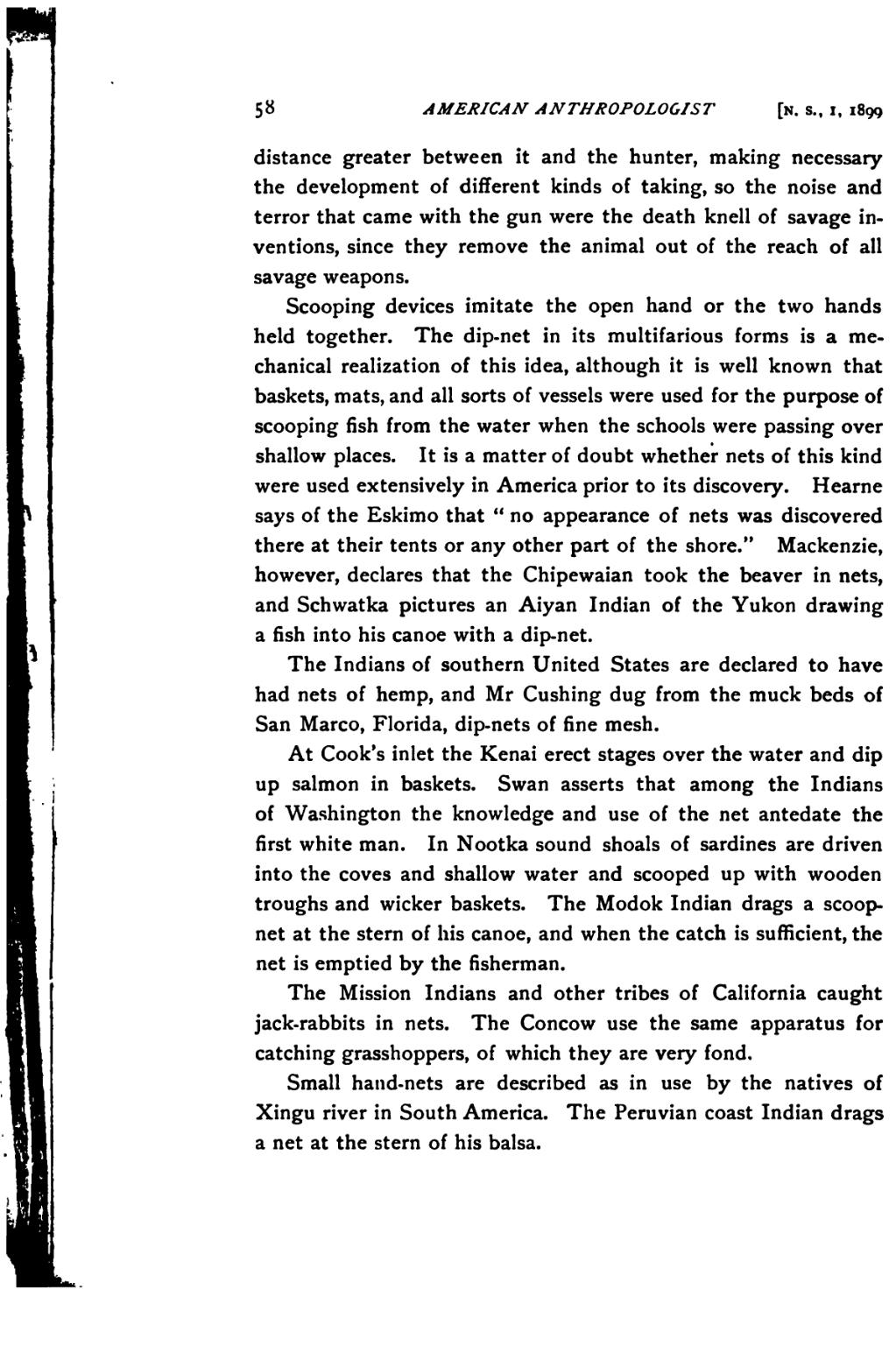distance greater between it and the hunter, making necessary the development of different kinds of taking, so the noise and terror that came with the gun were the death knell of savage inventions, since they remove the animal out of the reach of all savage weapons.
Scooping devices imitate the open hand or the two hands held together. The dip-net in its multifarious forms is a mechanical realization of this idea, although it is well known that baskets, mats, and all sorts of vessels were used for the purpose of scooping fish from the water when the schools were passing over shallow places. It is a matter of doubt whether nets of this kind were used extensively in America prior to its discovery. Hearne says of the Eskimo that "no appearance of nets was discovered there at their tents or any other part of the shore." Mackenzie, however, declares that the Chipewaian took the beaver in nets, and Schwatka pictures an Aiyan Indian of the Yukon drawing a fish into his canoe with a dip-net.
The Indians of southern United States are declared to have had nets of hemp, and Mr Cushing dug from the muck beds of San Marco, Florida, dip-nets of fine mesh.
At Cook's inlet the Kenai erect stages over the water and dip up salmon in baskets. Swan asserts that among the Indians of Washington the knowledge and use of the net antedate the first white man. In Nootka sound shoals of sardines are driven into the coves and shallow water and scooped up with wooden troughs and wicker baskets. The Modok Indian drags a scoop-net at the stern of his canoe, and when the catch is sufficient, the net is emptied by the fisherman.
The Mission Indians and other tribes of California caught jack-rabbits in nets. The Concow use the same apparatus for catching grasshoppers, of which they are very fond.
Small hand-nets are described as in use by the natives of Xingu river in South America. The Peruvian coast Indian drags a net at the stern of his balsa.

